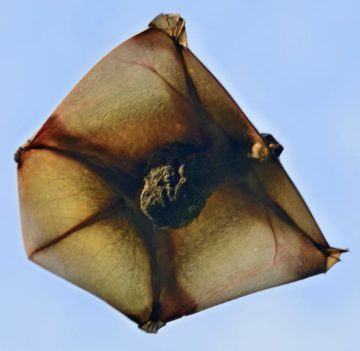Thomas Bird at the BBC:
 The creature stretched, then clung upright against the tree with its sharp claws and began to groom. Its skin required some attention as it had, frankly, a lot of it. A membrane stretched from its neck via its hands and feet to its tail, a kite-like feature that distinguishes the colugo, once popularly known as the flying lemur, from other night gliders like the flying squirrel, which has a long tail that it uses to fan itself through the air. Because they don’t fly, nor use a tail to fan, colugos, with the logic of a hand glider launching from a hillside, typically climb high into a tree before attempting to glide. Still, their range is impressive. According to Miard they’ve been recorded gliding a full 150m, although hops of 30m or less are far more common.
The creature stretched, then clung upright against the tree with its sharp claws and began to groom. Its skin required some attention as it had, frankly, a lot of it. A membrane stretched from its neck via its hands and feet to its tail, a kite-like feature that distinguishes the colugo, once popularly known as the flying lemur, from other night gliders like the flying squirrel, which has a long tail that it uses to fan itself through the air. Because they don’t fly, nor use a tail to fan, colugos, with the logic of a hand glider launching from a hillside, typically climb high into a tree before attempting to glide. Still, their range is impressive. According to Miard they’ve been recorded gliding a full 150m, although hops of 30m or less are far more common.
More here.
